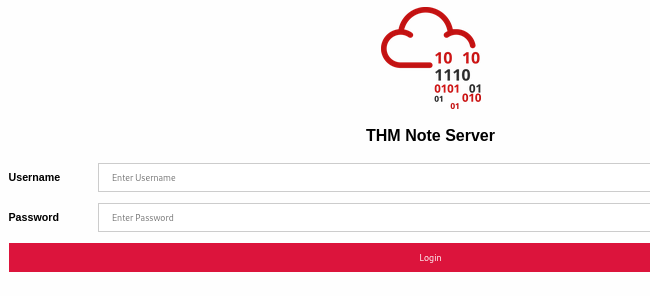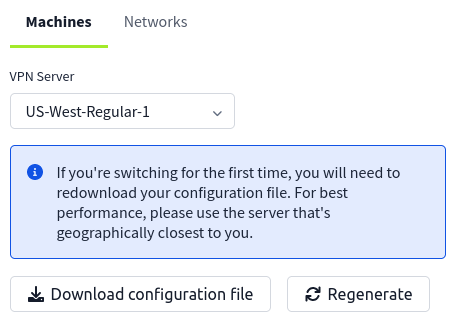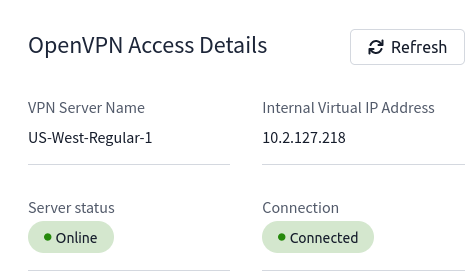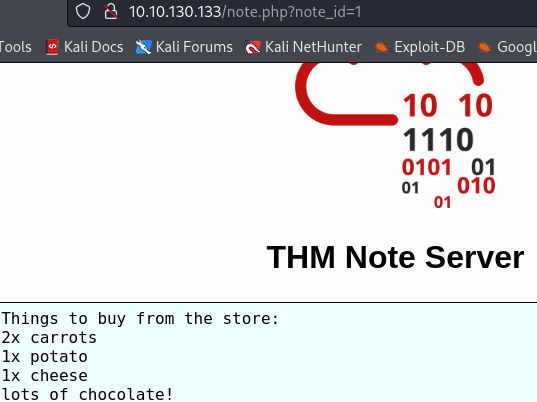Sws101_owasp top 10 2021
OWASP Top 10 - 2021
Firstly before entering the room download the vpn
Then connected to the vpn
After that spawn the machine and get the target ip address.
Topics you will learn in this room
- Broken Access Control
- Cryptographic Failures
- Injection
- Insecure Design
- Security Misconfiguration
- Vulnerable and Outdated Components
- Identification and Authentication Failures
- Software and Data Integrity Failures
- Security Logging & Monitoring Failures
- Server-Side Request Forgery (SSRF)
1. Broken Access Control
- Broken access control vulnerability is a security flaw that allows unauthorized users to access, modify, or delete data they shouldn’t have access to.
If the application doesn’t verify the user’s access rights before serving the requested data, it’s vulnerable to a broken access control attack.
Impact of BAC :
- Data breaches: Unauthorized access to sensitive information.
- Financial loss: Direct monetary impact and legal costs.
- Reputation damage: Loss of trust and diminished brand value.
Insecure Direct Object Reference
Insecure Direct Object Reference (IDOR) in a computer system is like a library where books are stored in a locked room. Each book has a number, but some numbers are secret and should only be seen by certain people. If you figure out those secret numbers, you can access books you’re not supposed to.
In this room we were given a small demonstration on how IDOR works.Firstly we paste the ip address in a browser, where it will direct us to page where we enter login username and password which was given, we just have to get the flag.

the first things in the id=1 is not a flag so i changed the id till 5 where I got a hint to try lower than going further.
So, I tried id=0 and got the flag.
2. Cryptographic Failures
I can send messages to my friend, and only him and I can see those messages; this is called encryption, and no one other than him and I can see those messages.
Cryptography safeguards information by concealing it in a manner that ensures only authorized recipients can decipher it. If this safeguard fails, attackers could potentially gain unauthorized access to sensitive information, thereby acquiring full control over it.
If cryptography filure occurs attackers can easily decrypt my message between me and my friend leading to a significant security risk.
3. Injection
SQL injection occur when a attacker SQL injection is a hacking technique where attackers manipulate input fields to execute unauthorized SQL commands on a database, potentially gaining access to sensitive information.
Command injection is when hackers trick a program into running their own commands on the computer it’s running on. They do this by sneaking in their own instructions through parts of the program that aren’t properly protected. This lets them control the computer and do things they’re not supposed to, like stealing data or taking over the system.
4. Insecure Design
Insecure design is a flaws in the application’s construction, creating opportunities for hackers to exploit and compromise its security.
5. Security Misconfiguration
Security misconfigurations happen when security settings are set up incorrectly, leaving your systems open to attacks. This can occur due to poorly documented changes, default settings, or technical issues, putting your data and systems at risk.
6. Vulnerable and Outdated Components
Vulnerable and Outdated components are software or applicationare that are outdated and contain bugs that are public to all, that is- sites like exploit-db contain the full detail as to how to exploit the bugs to put the security of the whole website under severe threat.
7. Identification and Authentication Failures
Identification and authentication failures are security vulnerabilities where a system fails to correctly identify or authenticate a user, potentially allowing attackers to gain unauthorized access.
This can happen due to weak credentials,like in above diagram user using weak username and password making it easier for attackers to exploit, or when the application fails to accurately verify user identities. Additionally, if session cookies contain predictable values, attackers can manipulate these to access user accounts.
- we can prevent this by setting strong password,Implement Multi-factor Authentication (MFA), and by Managing Sessions Securely.
8. Software and Data Integrity Failures
- Integrity means data is complete, trustworthy and has not been modified or accidentally altered by an unauthorised user.
Software and data integrity failures happen when software or infrastructure lacks checks to verify the integrity of data or software components, allowing attackers to modify or delete data without detection. This can lead to unauthorized access or system damage.
There are mainly two types of vulnerabilities in this category:
- Software Integrity Failures
- Data Integrity Failures
Software Integrity Failures
The software integrity failure happens when a website uses third-party libraries, like jQuery, hosted on external servers without verifying their integrity. If an attacker modifies the library, the website will unknowingly execute the malicious code. To prevent this, modern browsers support Subresource Integrity (SRI), which requires the library’s cryptographic hash to match the expected value. This ensures that only the original, unmodified library is executed, protecting against tampering.
Data Integrity Failures
Data integrity failures occur when web applications trust data that can be tampered with by attackers, such as session tokens stored in cookies. This can lead to security issues like unauthorized access or impersonation. To mitigate this, integrity mechanisms like JSON Web Tokens (JWT) are used. JWTs include a signature to verify the integrity of the data, ensuring it hasn’t been altered. However, vulnerabilities in JWT implementations can allow attackers to bypass this security by modifying the token’s header to use the “none” algorithm, effectively disabling the integrity check. This highlights the importance of securely implementing and validating JWTs to prevent unauthorized access and data tampering.
9. Security Logging and Monitoring Failures
Security logging and monitoring failures occur when a system fails to properly log or monitor security events, allowing attackers to gain unauthorized access without detection. This can include not logging important security events, not monitoring logs for suspicious activity, not storing logs for long enough, not having a process for reviewing and responding to security logs, and insecure logging and monitoring systems.
To protect against these failures, it’s crucial to log all critical security events, securely store and protect log files, regularly review and analyze logs, and set up real-time monitoring and alerting systems
10. Server-Side Request Forgery (SSRF)
Server-Side Request Forgery (SSRF) is a vulnerability where an attacker can manipulate a web application into making requests on their behalf to arbitrary destinations, with control over the request’s content. It happens when a web application uses third-party services and does not properly validate or sanitize the input that determines the target of these requests. Attackers can exploit this by changing the target to a server they control, potentially leading to unauthorized access, data theft, or other malicious activities.
](/../Image/OWASP.png)
















